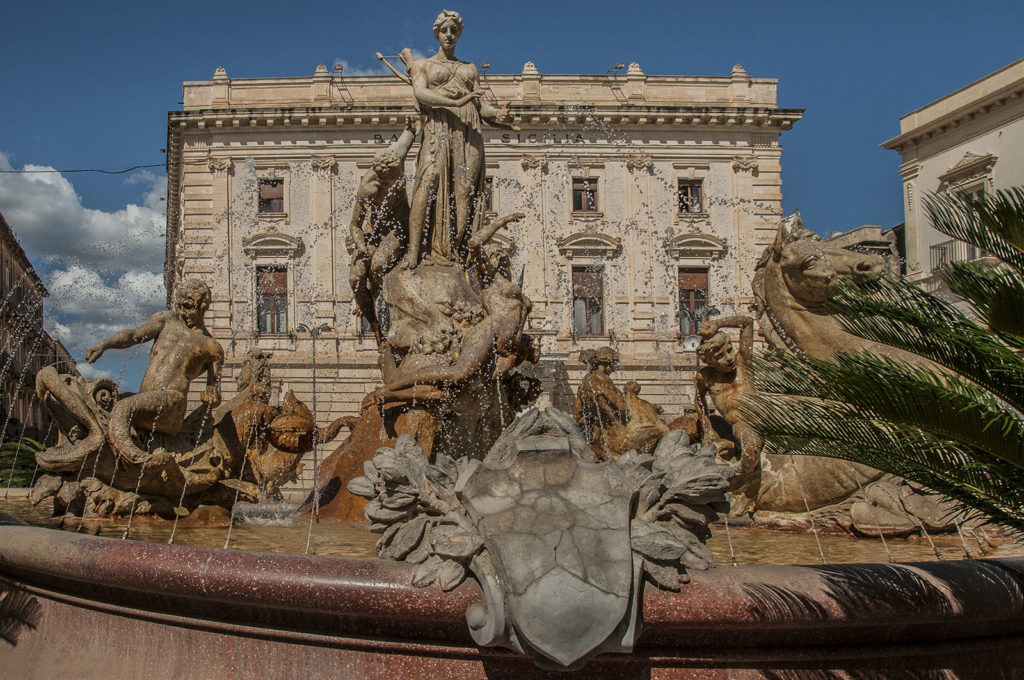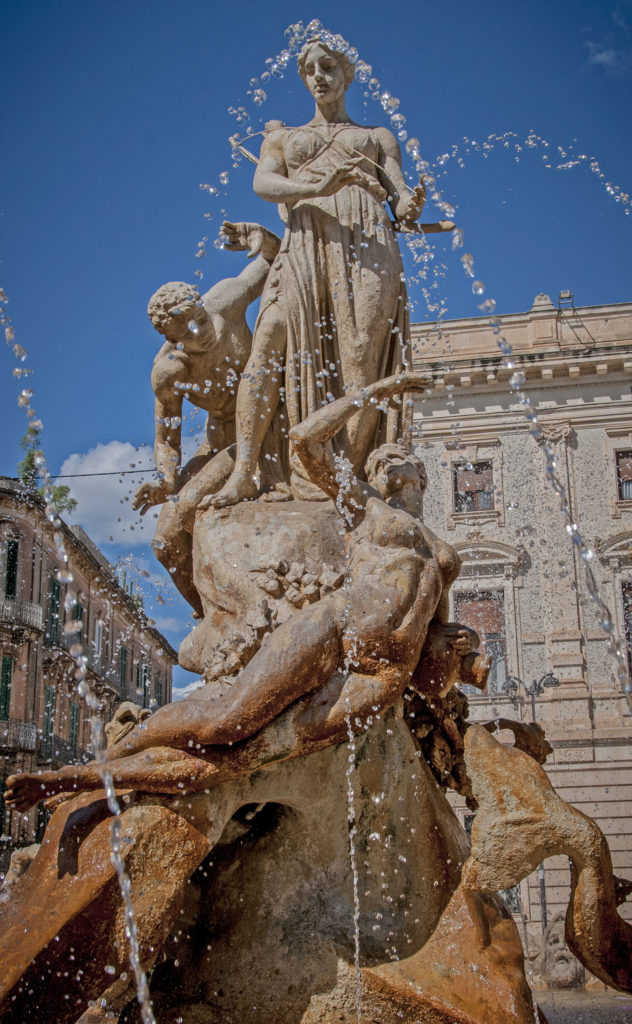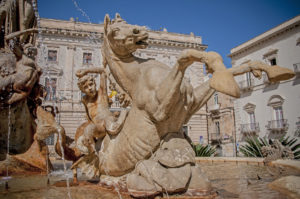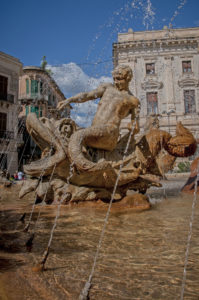The beautiful Fountain of Diana stands in the centre of Piazza Archimede in the heart of Ortygia. The work was built in 1906 by sculptor Giulio Moschetti, who had already achieved excellent results with the
Fontana di Proserpina
(Fountain of Persephone) in Catania.
The Fountain of Diana is a depiction of the famous legend of Arethusa. In the centre of the fountain stands the figure of Diana (named Artemis in Greek mythology) with a bow and a dog, typical elements of the hunting goddess and protector of Ortygia in Greek times.

At her feet is Arethusa escaping while on the verge of turning into a spring. On the side, Alpheus appears astonished by what is happening to his love.

In the pool there are four Tritons riding two sea horses and two
pistris
(sea monsters) moving between the waves.
These mythological characters symbolise the sea, the element where the love story ends.


Lastly, the pool has some
mascheroni
(masks) and coats of arms that echo the classic style of the forms. The fountain was built in reinforced concrete, both because this material is inexpensive and for its wide versatility.